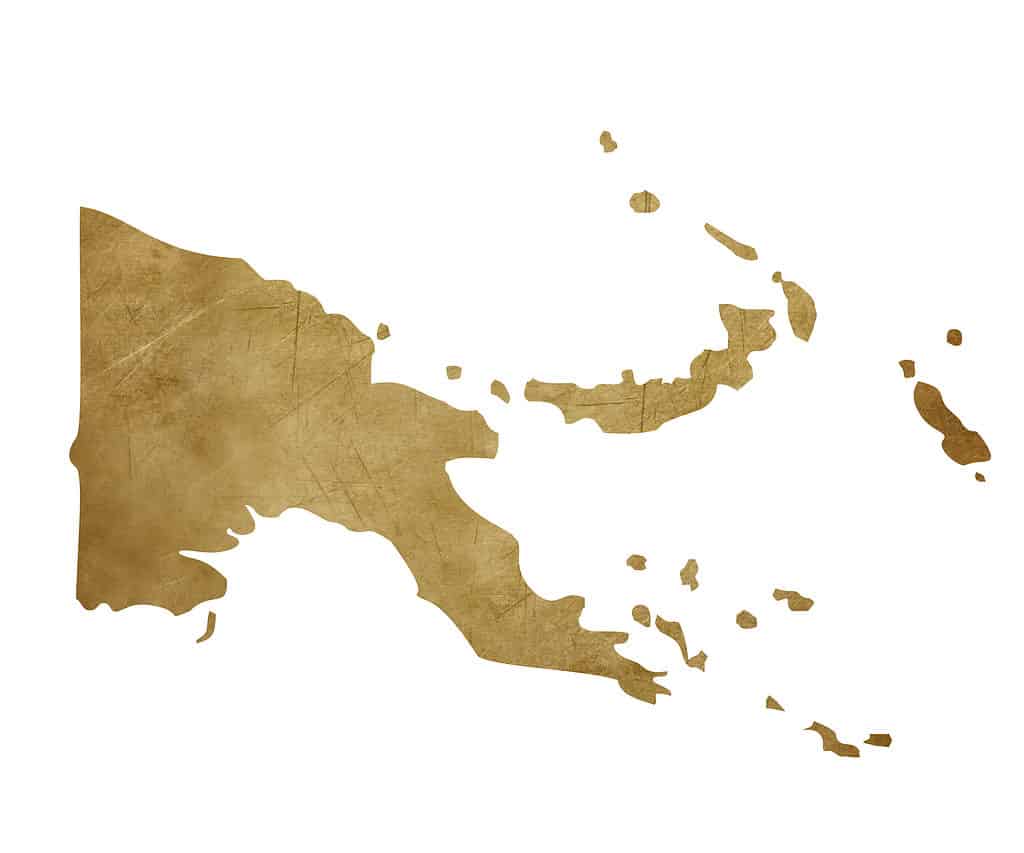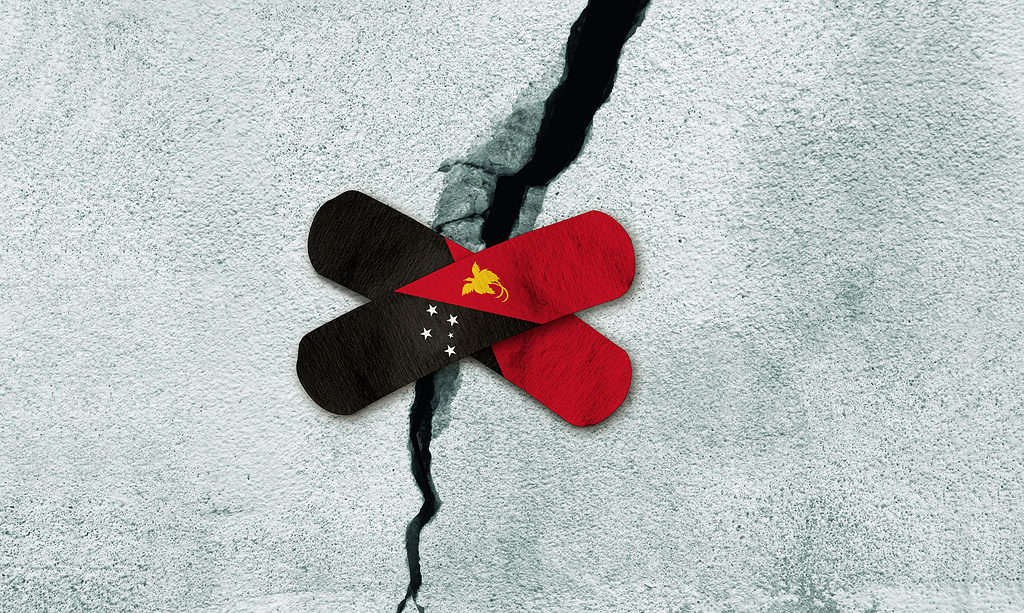PNG, or Papua New Guinea, is an island country in the southwest Pacific. As its name suggests, it encompasses the eastern half of New Guinea, which is the second-largest island in the world. Indonesia’s Papua and West Papua provinces make up the western part. Papua New Guinea’s current flag is the latest in a long line of flags that stretches back to when the country was still under colonial authority, nearly a century ago.
The contemporary Papuan flag retains some design elements from the country’s first colonial flags, but it also features several new symbols of the nation and its people. These additions make the flag, in addition to representing the country’s rich past, a symbol of the modern nation. In this piece, we’ll learn about the origins, significance, and symbolism of the Papua New Guinean flag.
Flag of Papua New Guinea History

Papa New Guinea Map Cutout
©iStock.com/uptonpark
1899 to 1914
It wasn’t until 1899 that Germany officially claimed New Guinea as a colony of its own and planted its flag on the island. Both the German national flag and a unique colonial flag were flown. The flag consisted of three equal horizontal bars of black, white, and red. The canton of the colonial flag was the national flag, and the fly had a black lion grasping a crimson lily. It kept rising above the land even after the British took over the province in 1914.
1949
The flag flown by the British colony included a blue background, a white Union Jack in the canton, and a seal representing the colony on the fly. In 1949, the colonies of British New Guinea and British Papua were combined to form the modern-day nation of Papua New Guinea. Papua New Guinea officially uses the New Guinea flag, which replaced the identical colonial flag of Papua as its use declined.
1970 to Present
The Australian government attempted to establish a new flag in 1970; it was a vertical tricolor consisting of the Australian flag’s blue hoist with the Southern Cross in white, yellow middle, and green fly, with a white bird of paradise.
In 1965, it was declared a trust territory, and the country established a green flag with a white bird-of-paradise on it. In 1970, a more sophisticated model replaced it. The new flag was officially adopted on July 1, 1971. It features the Southern Cross in the hoist and the Raggiana bird-of-paradise in the fly. In the early years of 1971, the design was selected via a nationwide design competition. Susan Karike, when just 15 years old, was the winning designer.
The Australian government presented Hal Holman’s vertical tricolor flag including blue, yellow, and green stripes, the bird of paradise, and the southern cross prior to independence. A majority of people were unimpressed since it seemed like a “mechanically constructed solution,” therefore the alternate plan credited to Susan Karike won.
Flag of Papua New Guinea Meaning

Photo manipulated wall with Papa New Guinea flag bandages.
©iStock.com/Sergio Lacueva
Design
Papa New Guinea’s flag features two black and red triangles. Gerrus paradisaea, or the “Bird of Paradise,” is the official emblem of the country (though not the “coat of arms”). The native kumul bird of paradise is seen flying across the red half of the flag. This stands for the newly independent nation of Papua New Guinea. The five evenly spaced stars of the Southern Cross symbol sit atop a black flag, representing the country’s close ties to Australia and other South Pacific nations. Yellow, red, and black is also common in Papua New Guinean culture.
Colors
Many Papua New Guinean tribes have historically used the colors red and black in their ceremonial regalia. Prior to 1918, New Guinea was colonized by the German Empire. Their flag was a black, white, and red vertical tricolor.
Flag of Papua New Guinea Symbolism
A diagonal line from the fly end of the Papuan flag to the hoist end forms the flag’s dividing line. The flag is divided into two halves, the lowest one being black and the upper part being red. Each half of the flag features a different emblem. Lower on the flag is a white Southern Cross constellation, while higher up is a golden-colored bird-of paradise (raggiana).
The flag’s black and crimson sections represent the German Empire’s flag, which was flown at the outset of colonialism. These were also traditional tribal symbols in Papua New Guinea. The constellation is a nod to the country’s position in the Southern Hemisphere. The bird of paradise is a representation of the abundant wildlife that calls the country home.
Up Next:
- The Flag of Argentina: History, Meaning, and Symbolism
- The Flag of Namibia: History, Meaning, and Symbolism
- The Flag of Uzbekistan: History, Meaning, and Symbolism
The photo featured at the top of this post is © EA09 Studio/Shutterstock.com
Sources
- Wikipedia, Available here: https://en.wikipedia.org/wiki/Flag_of_Papua_New_Guinea
- Britannica , Available here: https://www.britannica.com/topic/flag-of-Papua-New-Guinea
- CRW Flags, Available here: https://www.crwflags.com/fotw/flags/pg.html
- Gettysburg Flag, Available here: https://www.gettysburgflag.com/flags-banners/papua-new-guinea-flags
Thank you for reading! Have some feedback for us? Contact the AZ Animals editorial team.






